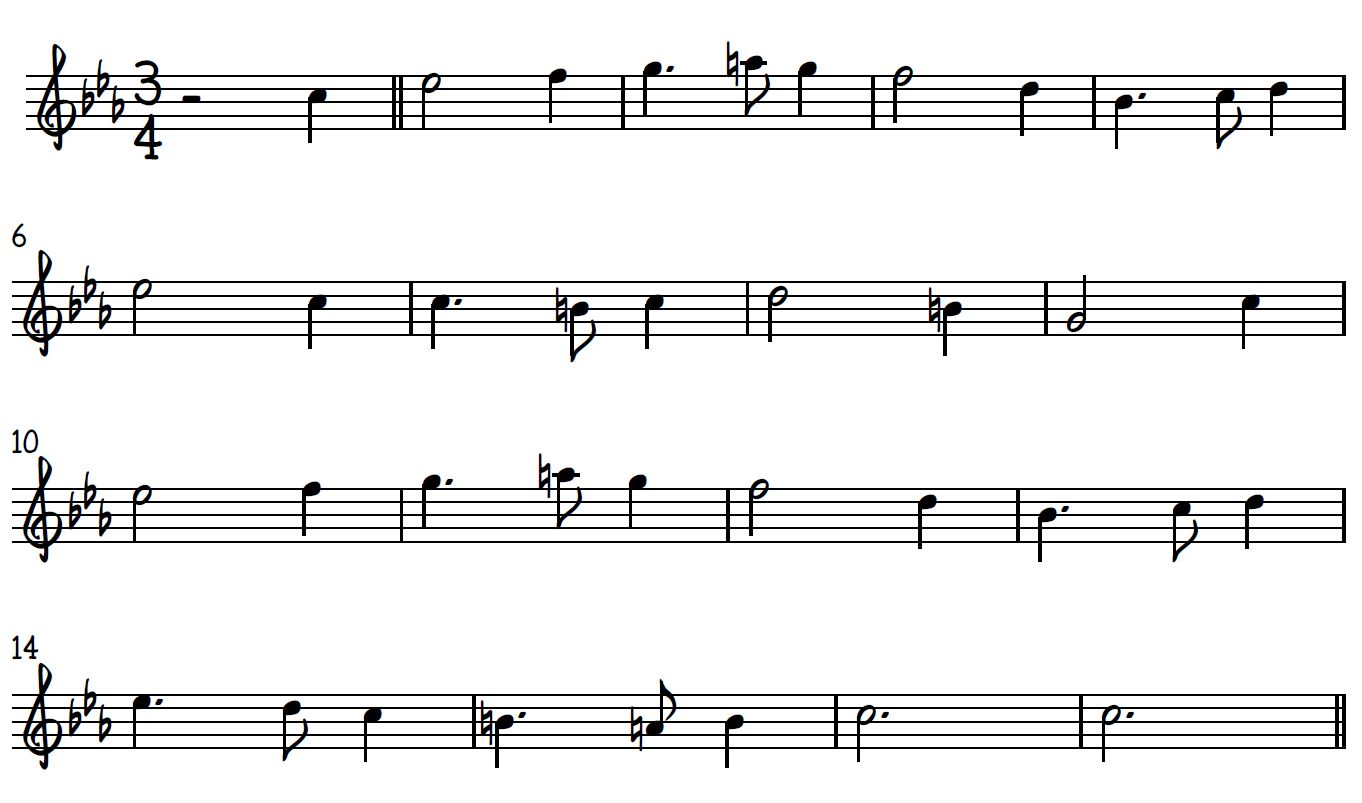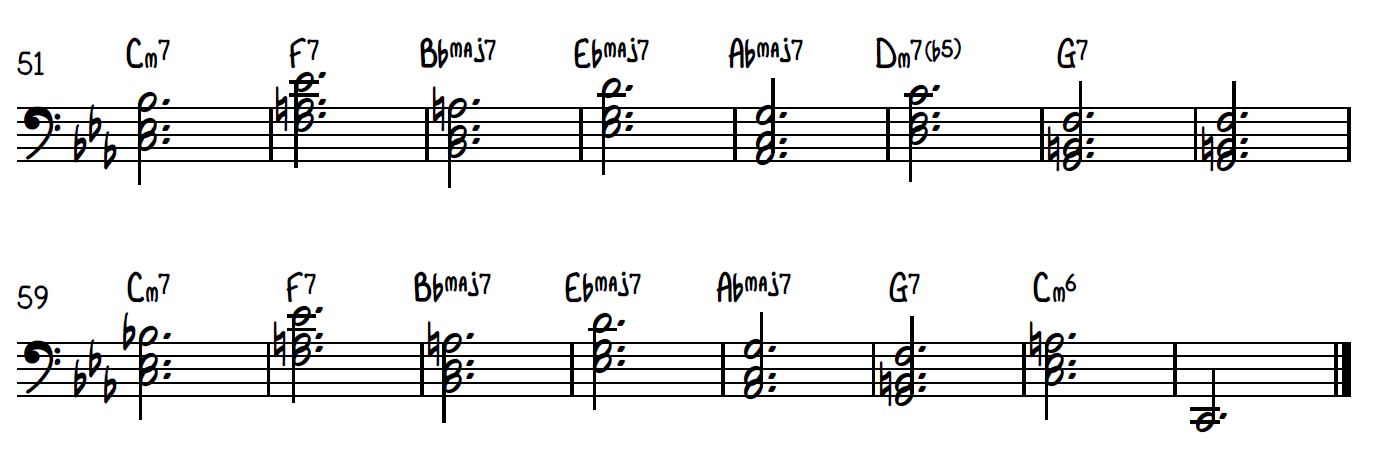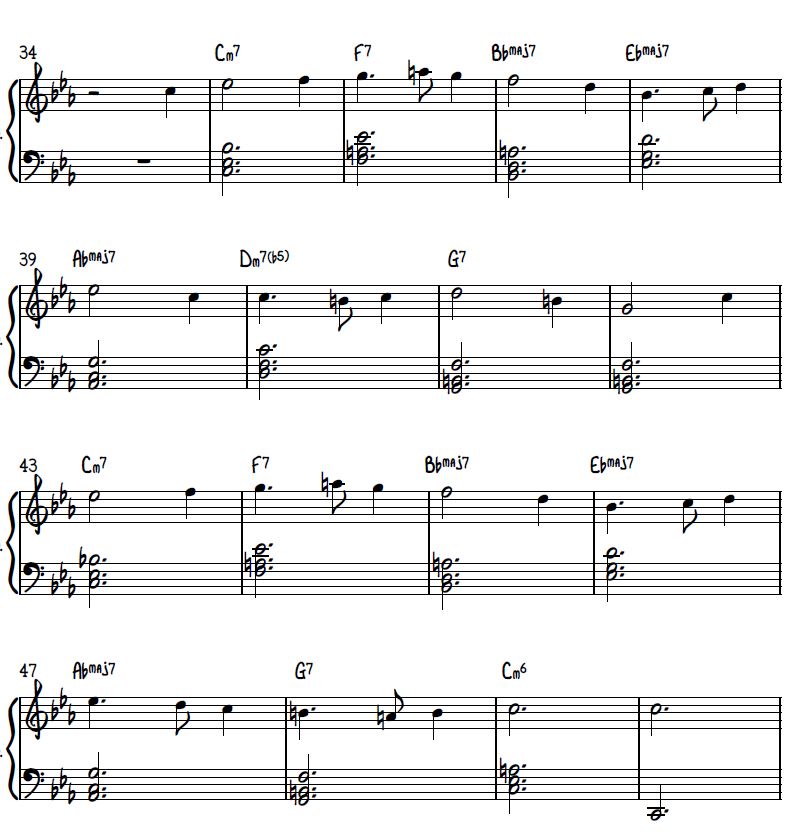Greensleeves (What Child Is This) Jazz Piano Waltz
Learning Focus
Music Style
Free Lessons
Get free weekly lessons, practice tips, and downloadable resources to your inbox!
Have you ever been curious about how to play stride piano in 3/4? Are you looking for a new way to play holiday music and make it more interesting? In today’s Quick Tip, you’ll learn Jonny’s Greensleeves jazz piano arrangement in 3 steps:
- Learn the melody
- Learn left hand shell chords
- Convert the stock left hand to stride
Feel free to follow along with our Smartsheet, where you can change the key, change tempo, and loop sections for practice. Let’s get started with the melody for Greensleeves!
Step 1: Greensleeves Jazz Piano Melody
The most important part of any song is the melody, so let’s start by taking a look at that. You are probably familiar with this song already! Here’s the melody by itself:

While this melody may look long, it’s really just two long phrases that differ at the end. Once you can play the first phrase, the second phrase should be much easier because of its repetition! Let’s start by looking at the first part of the first phrase. This is the section that repeats:

Make sure you pay attention to your fingering! This melody can be tricky to play correctly if you use the wrong fingering. These first four measures cover the span of nearly an octave; look ahead to see what kind of intervals are coming and which direction the notes move. This is a great habit to get into while you’re reading because you’ll be able to anticipate which fingers you’ll need as you move through the melody.
Once you’re comfortable playing the first (and third) four measures, let’s look at the next four measures:

Practice through these next four bars the same way you did the first four. Watch your fingering and go slow if it’s hard! Once you can do this, repeat the first four bars you’ve already learned. Now for the last four bars (the easiest!):

These four measures should be super easy! Once you can play this last part of the second phrase, put all the pieces together and play the whole melody through. Once you can do that, let’s move on to the left hand!
Step 2: Left Hand Shell Chords
Let’s look at the left hand part before we dig in:

As you can see, each eight measure phrase is the same harmonically! We will be using shell chords to create our left hand part. Shell chords are chords that contain the minimum amount of notes to express the chord quality. You only need three: the root, the 3rd, and the 7th. All of the shell chords in this arrangement are in root position with the 3rd and 7th stacked on top.
Practice playing these shell chords together rather than broken up, like this:

Don’t these chords sound good? Shell chords are the harmonic foundation for jazz! By adding the 7th to all these chords we are adding some lovely harmonic color. You may be wondering why there are no 5ths in these chords. The answer is that unless a chord needs an alteration to the 5th (for example, augmented, diminished, or half-diminished chords) it has no effect on the quality. Major 7, minor 7, and dominant 7 rely on the 3rd and 7th only for their chord quality!
A great way to hear what I’m talking about is to play a C Major 7, C minor 7, and C dominant 7 chord each without the 3rd and 7th (leaving only the root and 5th). They all sound the same! I love demonstrating this because you can really hear how much impact the 3rd and 7th have on all these chords.
Once you can play the left hand shell chords, play them along with the melody to get the overall sound of the arrangement:

This sounds awesome! When you can play through the whole arrangement this way, you’re ready to move on to the stride technique with your left hand. Let’s get into that now.
Step 3: Left Hand Waltz Stride Technique
So far our arrangement is sounding pretty good, but it’s missing a groove. The groove is created from the feel and syncopation generated by the stride technique. Here’s what the stride left hand will sound like in 3/4:

The key here is the rhythm! We will also be playing these chords broken to create the groove. Place a slight accent on the and of 1 and beat 3 to propel the groove along. Spend some time practicing this groove! It can be tricky to get this down at first, but once you do you’ll really feel the jazz waltz groove coming through!
Articulation is another important component of this groove. The and of 1 should be short and the rest of the notes should be long. Short upbeats will make this groove bounce and swing the way we want it to. As with any groove, the contrast between long and short notes is imperative if you want it to feel good! It may not seem super important, but these little things make a huge difference in the overall feeling of this groove (and any groove, for that matter). Once you’re comfortable with the groove, put the whole thing together and enjoy!
If you want to dig into more detail on the topics covered today, check out our Greensleeves (What Child Is This) 1 and Greensleeves (What Child Is This) 2 courses to learn the rest of the song. Feel free to dig into our Jazz Waltz Challenge and Play Piano Lead Sheets with Shells & Guide Tones courses as well.
Thanks for learning, and see you in the next Quick Tip!
Blog written by Austin Byrd // Quick Tip by Jonny May
More Free Lessons
Do your improv lines sound aimless? Develop authentic jazz language with bebop scales used by legends like Charlie Parker and Dizzy Gillespie!
John Proulx demonstrates how to adopt Stevie Wonder's beloved classic "You Are the Sunshine of My Life" for solo piano.
A complete guide to understanding and applying the concept of guide tones for the beginner jazz piano student.
Looking for downloads?
Subscribe to a membership plan for full access to this Quick Tip's sheet music and backing tracks!
Join Us
Get instant access to this Quick Tip and other member features with a PWJ membership!
Guided Learning Tracks
View guided learning tracks for all music styles and skill levels
Progress Tracking
Complete lessons and courses as you track your learning progress
Downloadable Resources
Download Sheet Music and Backing Tracks
Community Forums
Engage with other PWJ members in our member-only community forums
Become a better piano player today. Join with the 14-Day Free Trial today!



